We sailed in July 2016 from Helsinki towards Saint-Petersburg and further east and north through the Russian inner waterways to the White Sea and the Barents Sea, aiming to arrive in Tromsø in Norway early September. The first part of this trip, up to Voznesenye on the shore of lake Onega, appeared in Flying Fish 2018-1, the second part from there to Poveniets, may be found in Flying Fish 2018-2. Both are also available on this site.
Approaching the lower gate of a lock is seldom a scenic highlight as one is per definition standing beneath the high doors and walls that water will fill until one finally dominates the landscape. Once inside the lock, one feels as if one were at the bottom of a deep, not too clean, can. There was no exception as we neared the first lock of the Belomorsk canal, the canal that connects the Baltic sea basin to that of the Arctic ocean, on a cold and grey morning of August 2016, further shadowed by a lurking headache, most probably due to the many glasses of vodka absorbed during the long evening at Konstantin’s place the day before (see part two of this series).
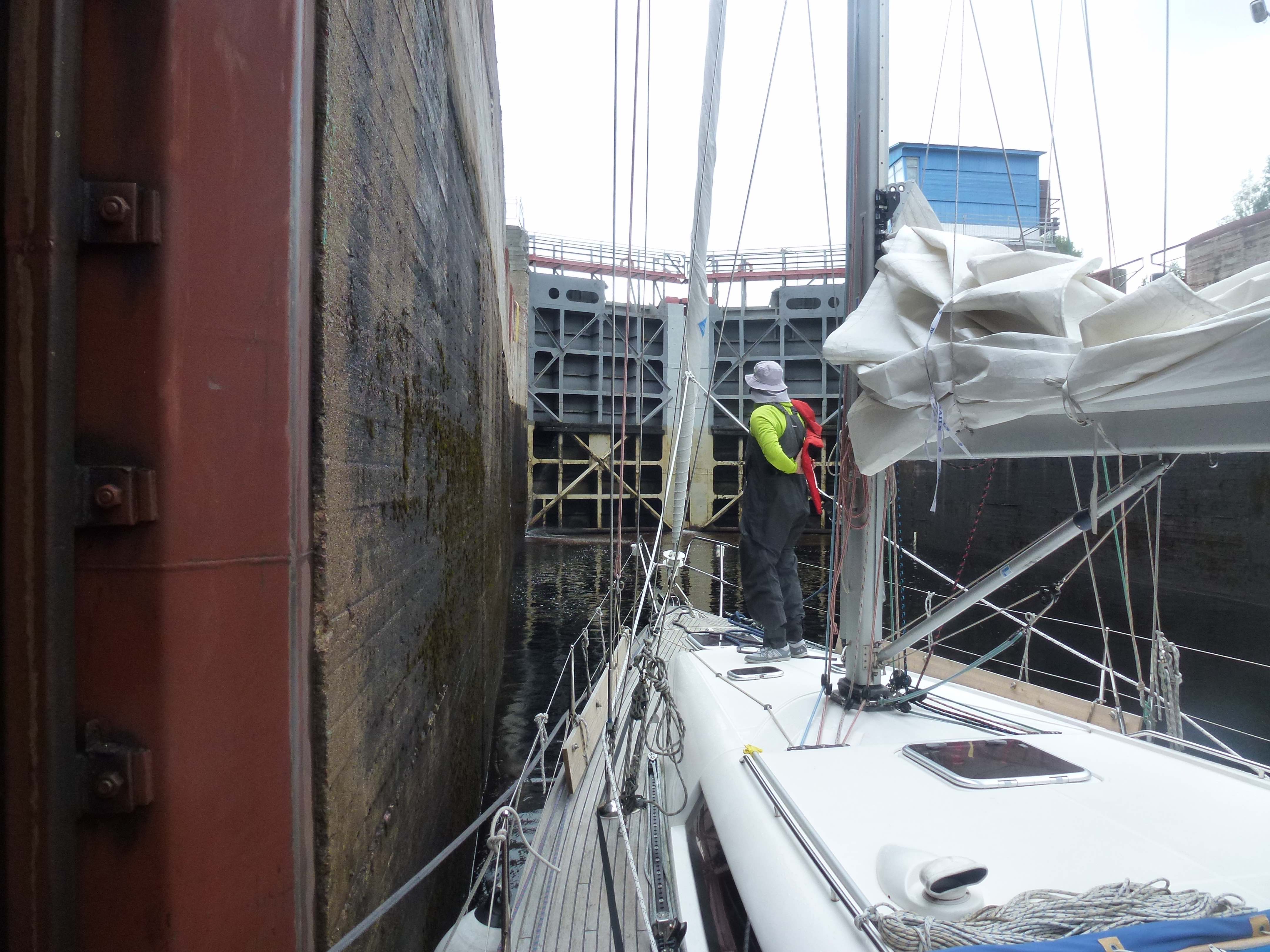
Fig. 1: At the bottom of a lock
The entry to the canal and lock is a few nautical miles south of Poveniets in the northern most part of lake Onega. Passing the lock door meant entering the first element of a canal built at the cost of tens thousands lives of Stalin’s prisoners in the first years of the 1930s. Every dent in the rock we were to see in the course of the following days had been carved by hand; as cost constraints imposed on the building work required that no explosives be used. Every rock, all earth and trees that needed to be moved or removed to dig the canal had been carried by human force unaided by any motorised device. The lock walls, now in concrete, had been originally covered by trunks cut from the surrounding forest.
The canal is an old idea: The route linking the arctic ocean, and therefore the Atlantic, to the Baltic sea had already been followed by Peter the Great and François Le Fort, the first admiral of the Russian fleet, who grew up in Geneva, brother to one of my ancestors. A piece of history that was part of the reason for which we were waiting in front of this very lock on that cold and grey morning. Digging the canal had nonetheless to wait for three centuries following this reconnaissance by the Tsar and the Admiral, before Stalin ordered its construction. And the result was far from the expectations raised by the strategic importance of the route. The locks had been designed and built to dimensions too small to accommodate 20th century military ships. Stalin is said to have been furious when he was taken along the canal for its inauguration in 1933.
The weight of this history contributed nothing to lift the spirit of Cérès’ crew on this cold morning of August 2016.
The locks are equipped with hooks attached to large steel canisters floating within vertical rails along the walls, thus allowing ships to tie at a height that remains constant with respect to their deck as the lock fills or empties. The only difficulty of this brilliant system is that the distance between rails is much too large for yachts to use two, so that we could only attach our mooring lines to a single hook while ascending or descending locks. We made the mistake in the first one to use a hook in the middle of the lock and to leave too much slack in the lines. We therefore danced uncomfortably against the lock wall while being lifted. For all the following locks we used the hindmost rail, where much less turbulence prevails, and pulled our mooring lines very tight. We thus never had any problem any more.
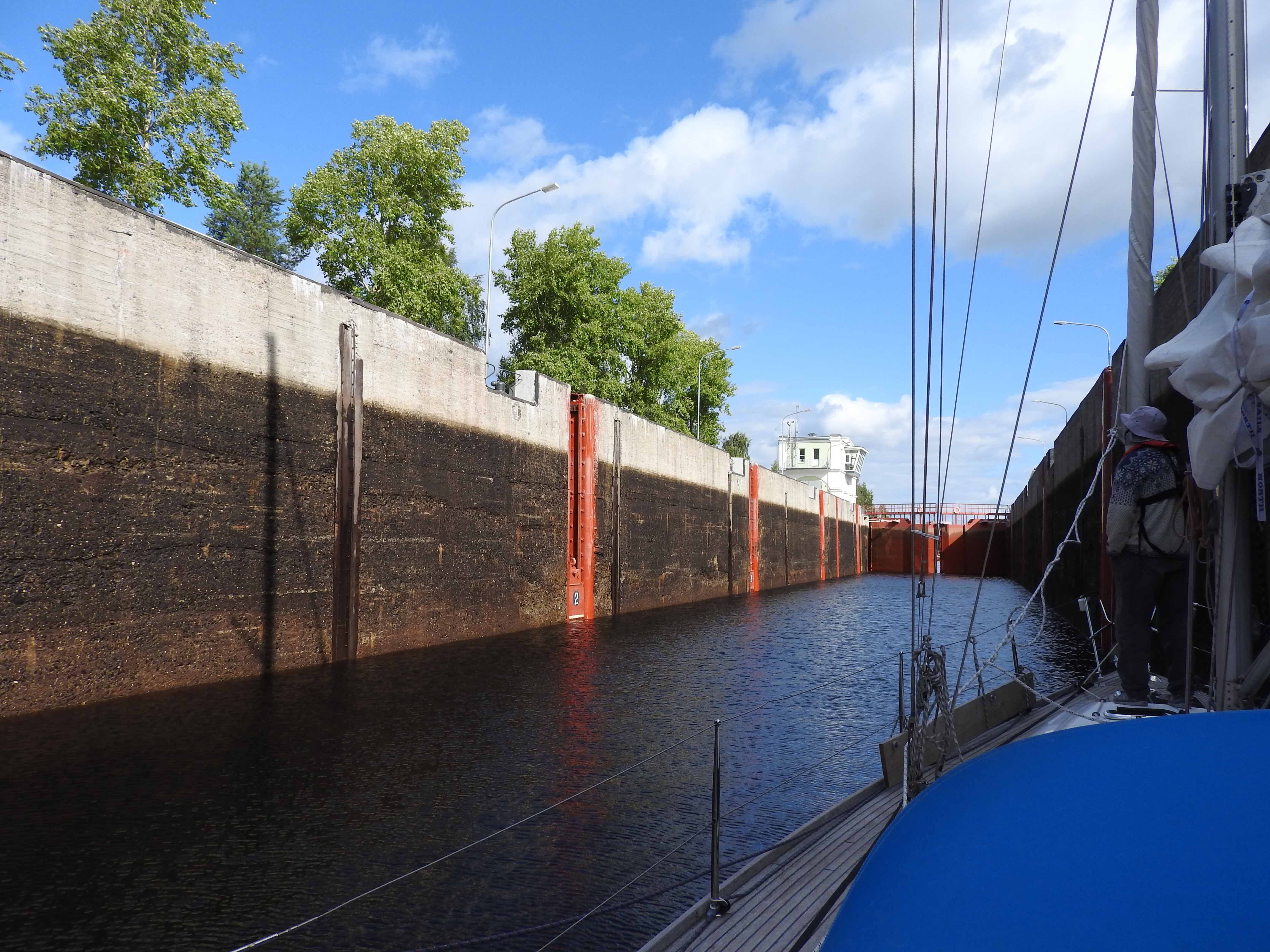
Fig. 2 Rails on the walls of the locks, an ingenious system
The first section of the canal is dug in the rocks, it is followed by a part where land was inundated by building dikes and damps. One therefore first motors through the dense forest characteristic of the whole northwestern Russia, and follows thereafter well marked channels on wide and shallow artificial lakes won over the same forest. Locks animate the passage, sometimes single sometimes double, lifting us to slightly above 100m over sea level, before climbing down again. We motor-sailed and sailed some 220km in this way, anchoring twice to spend the night on the side of the canal. Lifting the anchor after the first night we heaved a whole trunk complete with roots, branches and bushes.

Fig. 3 On the Belomorsk canal, the canal itself
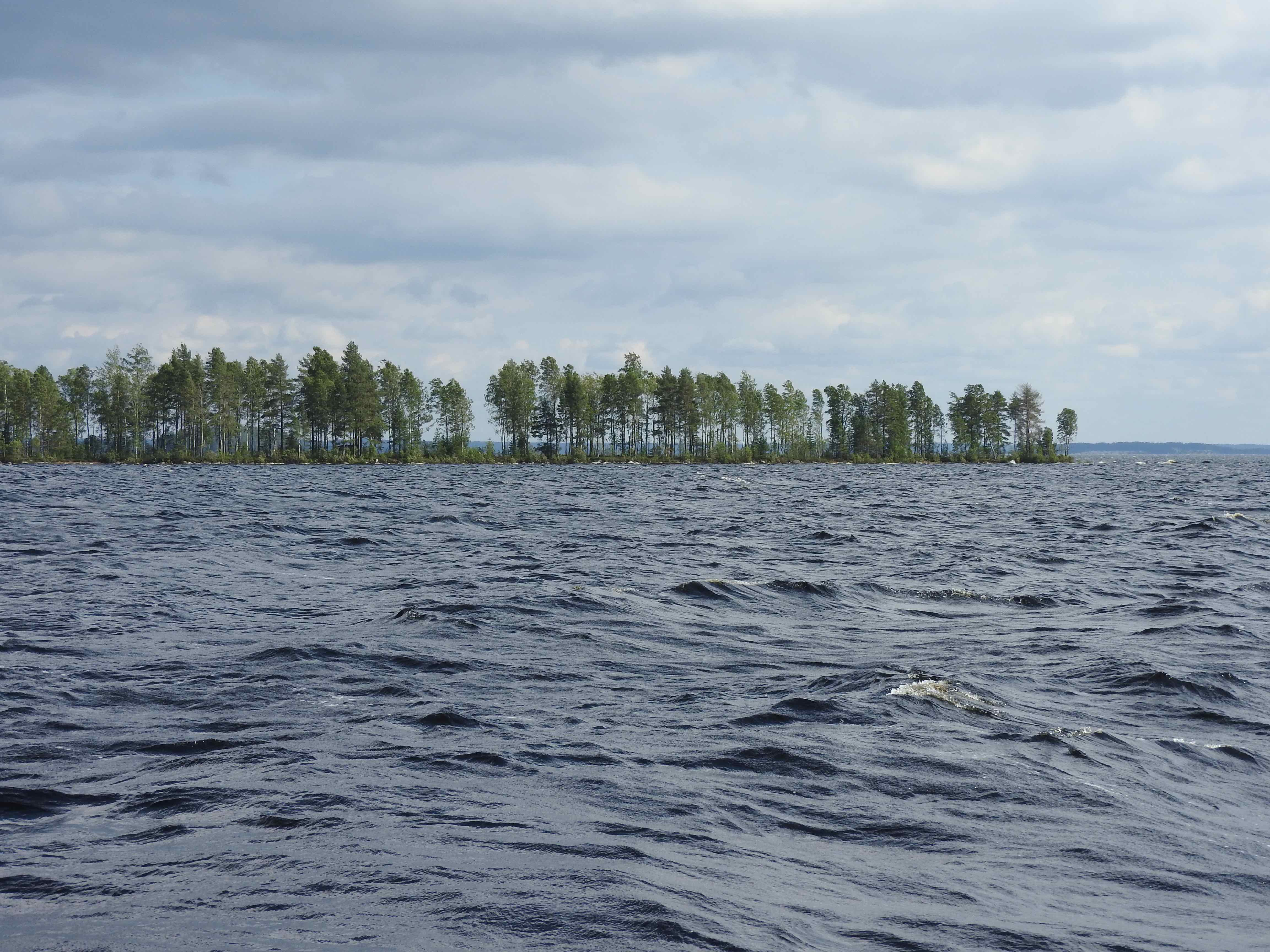
Fig. 4 On the Belomorsk canal, the artificial lake
During our navigation on the canal we saw one old tug boat, one old cargo ship and, on the eve of our second night, a Russian sailboat returning from a circum scandinavian navigation executed in two months. They were so tired and eager to be home that they didn’t even take the time to share a drink with us. For the rest, the waters were deserted in the midst of a continuous monotonous forest completely devoid of human settlements. At one point a railway water tower emerges from the surface of the lake, a vestige of the railway line that was inundated with the forest to form that section of the canal. The lonely grey tower emerging from the dark surface of the water in the thick forest forms a landscape that would be an ideal setting for a slightly sinister teenager adventure story.
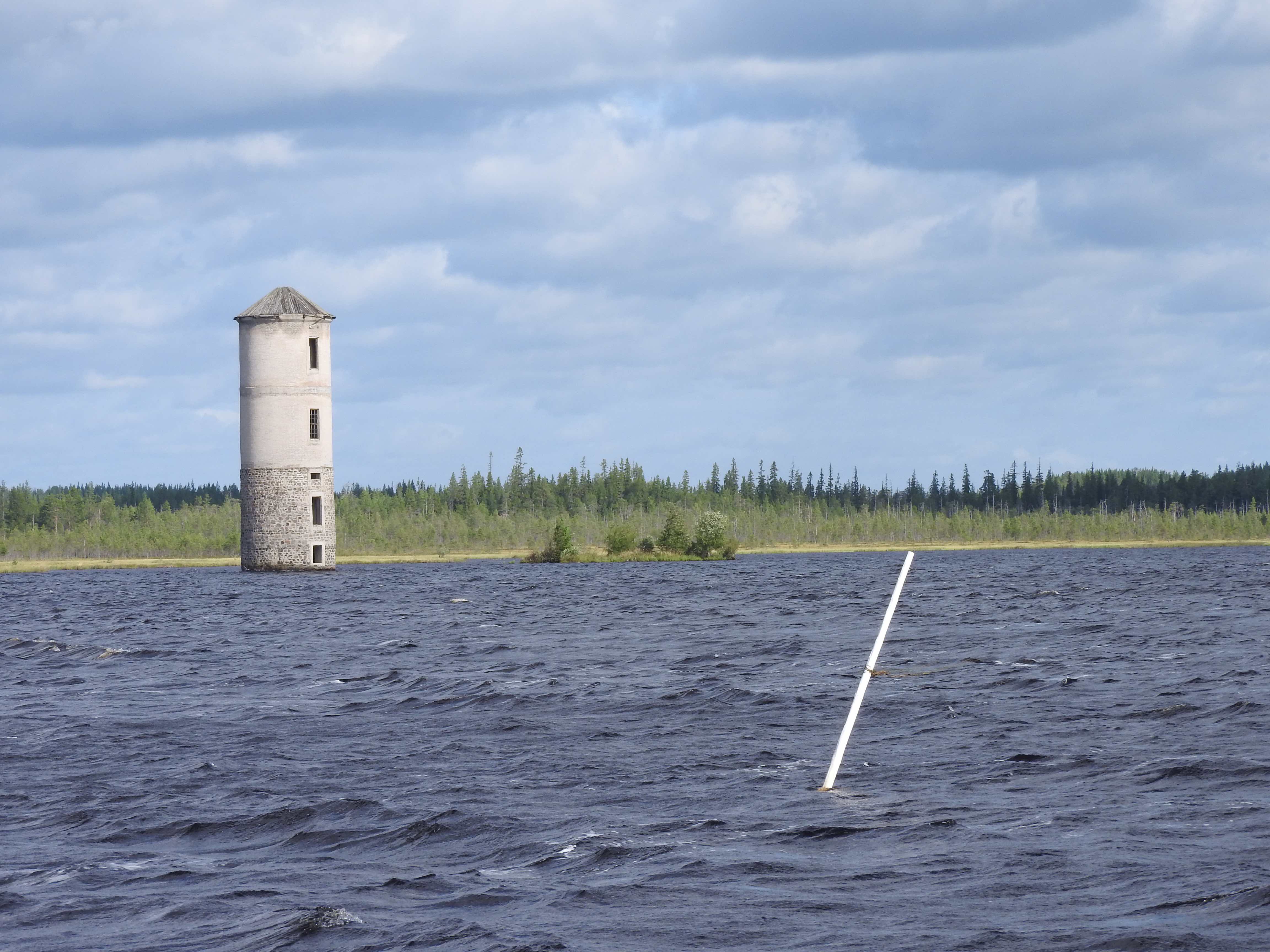
Fig. 5 The railway water tower, a vestige of the drowned train line.
There was much wind when we sailed on the artificial lakes, no problem for Cérès, but some worry for her skipper, who had to manoeuver cleanly in the locks to reach the wanted hook, as no shore help was available anywhere. While approaching the locks, Masha, our Russian translator, contacted the staff on the radio. We were then told on which side we should tie, some locks being indeed in such a poor state that one side was derelict and could not be used. As no other ship was anywhere around we never had to wait for the doors to open, which also demonstrated that the lock operators were continuously informed of our approach well in advance. All locks are guarded by armed men and women and photographs are forbidden, of which we were sternly reminded several times. With no traffic or human activity to be seen along the canal, in the locks, or in the endless surrounding forest, it was difficult to understand the purpose of all these armed men and women pacing up and down the quays of the locks.
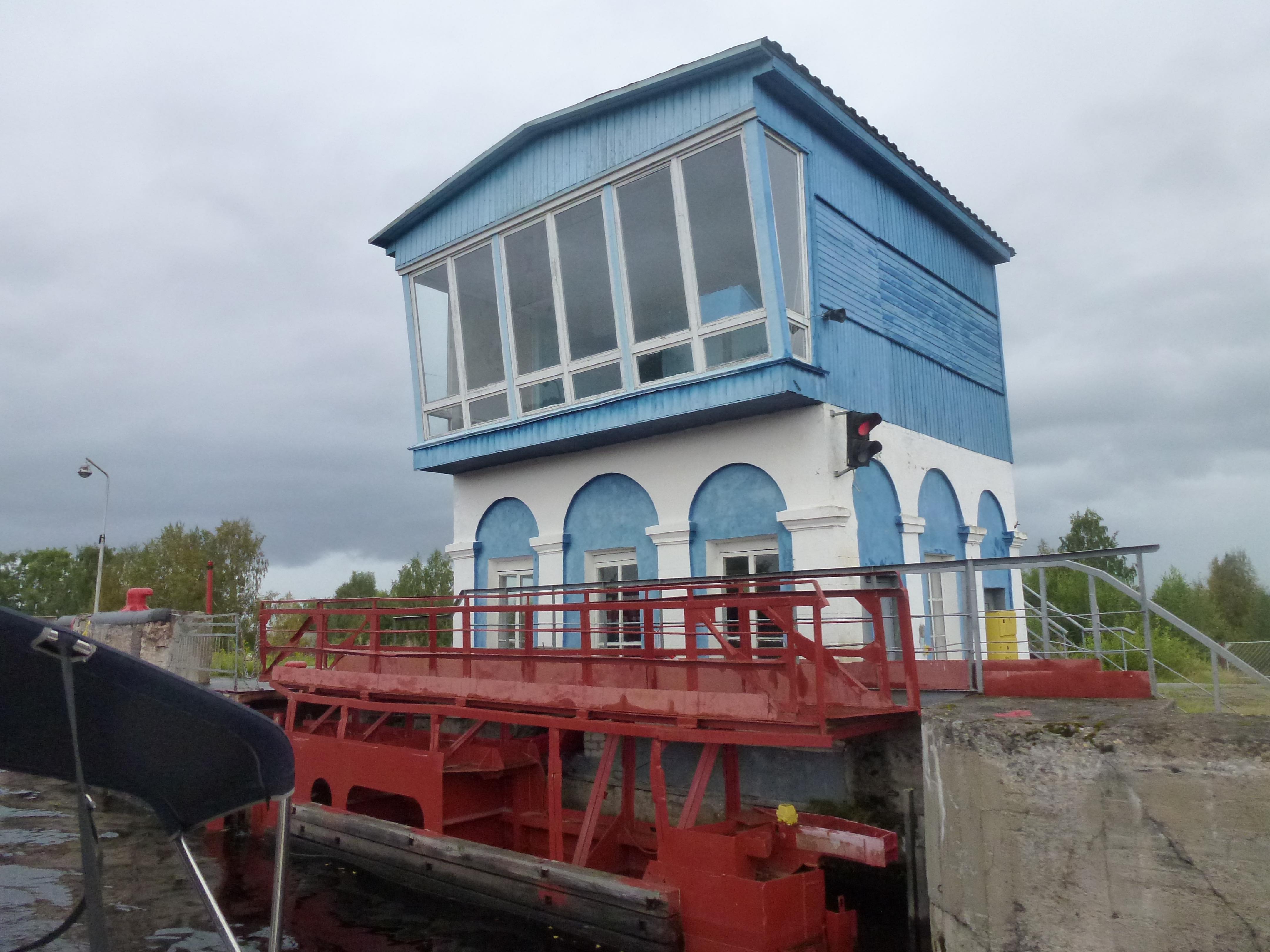
Fig. 6 The infrastructure of the locks
In the middle of the third day we approached Belomorsk, the city at the northern end of the canal, where we were to stop and fill the paper work requested to exit the Russian inner waterways and enter the maritime environment again. Few kilometers ahead of the indicated quay, we neared a lock followed by an old railway bridge that the authorities are reluctant to open. The train line, of which this bridge is an element, is of vital importance as it is the sole railway link between the northernmost parts of the region and the city of Mourmansk on one side, and Moscow and the rest of Russia on the other. A problem while the bridge is open would certainly cause a major disruption in the trans-regional traffic. The bridge is an old steel construction, probably awkward to operate. The authorities open the bridge only when needed, only between 4 pm and 6 pm, and only when the wind is less than some 10 or 12 knots. Since there is no room to anchor between the lock and the bridge, we wanted to wait the few hours before the possible opening time ahead of the lock where anchoring looked possible. Permission to do this was, however, denied. We were requested to go through the lock as soon as we arrived. We then asked to wait moored on the quay at the exit of the lock. That permission was again refused, despite the complete absence of activity. We were given no choice but to tie on a concrete cube that stood three meters by three by three above the surface in front of the bridge in a very narrow section of the canal. There was no infrastructure, hook or ring, to which we could tie ropes at a height that could be reached from our deck, which the lock staff obviously knew. The guards therefore escorted one of us, Nicolas, with weapons and dogs, on a path to a shaky walkway that linked the concrete block to the land, and left him there while we approached. The problem was to use rusty iron remains on the top of the block to secure Cérès in the fresh breeze blowing then, to install a ladder for Nicolas to climb down and to establish everything so that we could get all the lines back when we would be allowed to proceed later on that day, or on the following one, or even later, when the wind would be weak enough for the bridge to be opened. The perspective of spending 24 hours or more between lock and bridge on a deserted stretch of the canal was all but pleasant. Eventually, however, the wind decreased; staff became active on both sides of the bridge; and an official ordered us on the radio to leave our block to sail beneath the bridge now towering in the air as fast as possible. I was relieved when the bridge was behind us and only one last lock separated us from the White Sea and the freedom of the sea.
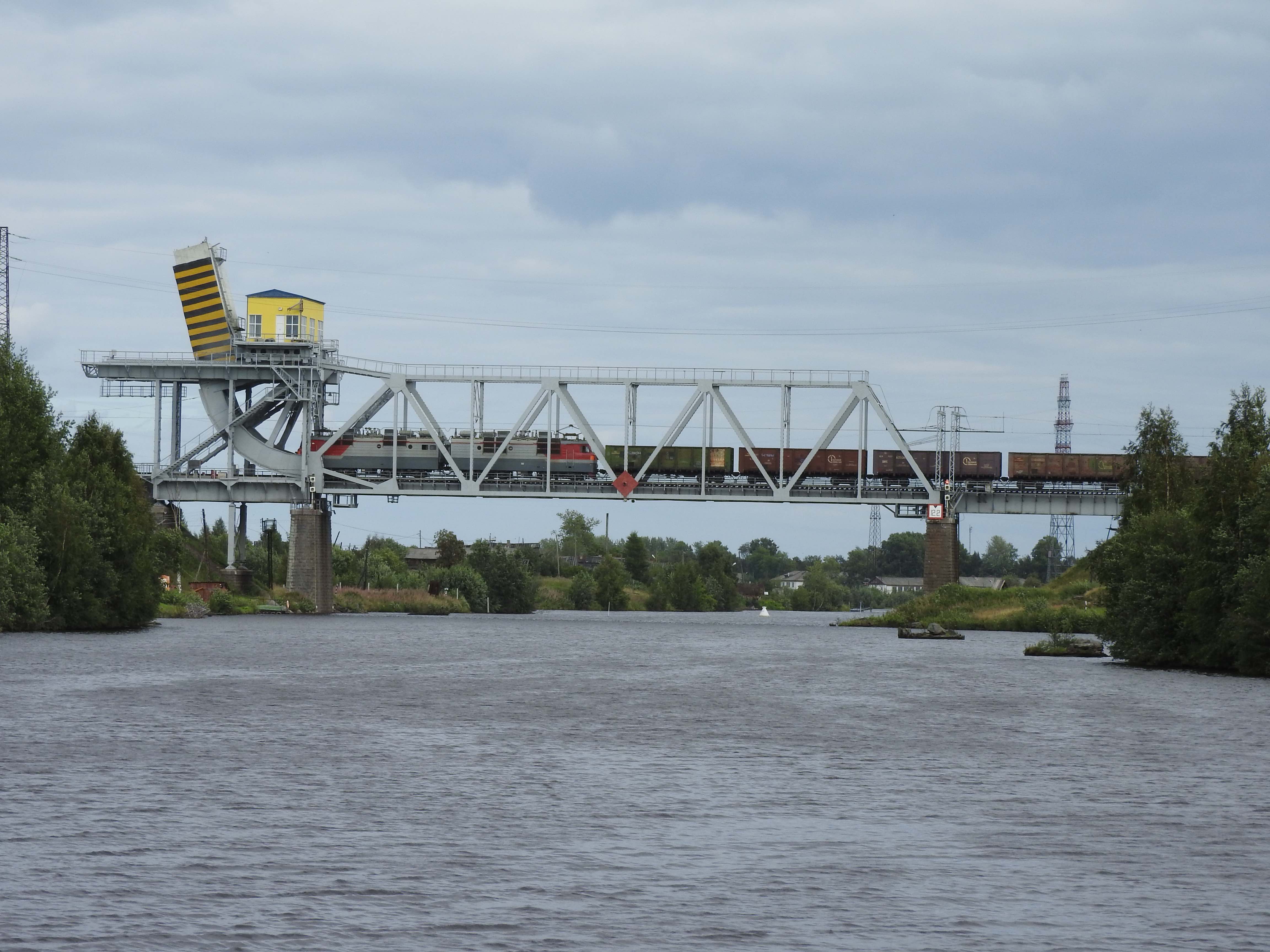
Fig. 7 The train bridge before Belomorsk
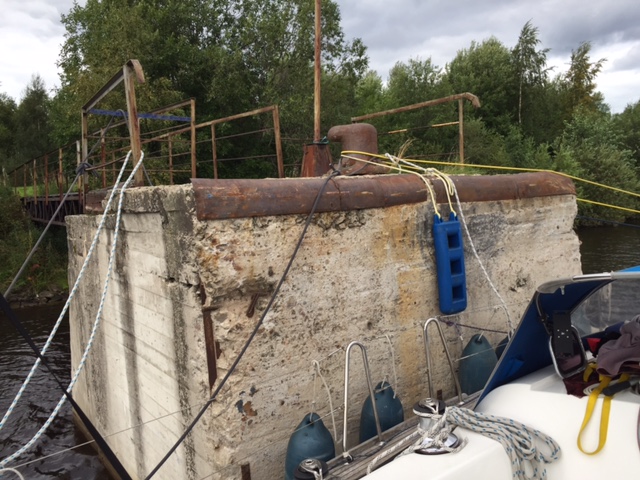
Fig. 8 Waiting for the bridge to open
We had to stop in Belomorsk in order to report to the authorities. I expected a small town, at least some houses along a quay and some life. We were eager for a meal in a cafe or restaurant and for a bit of human life. But instead of a lively environment , we found a high stone quay along a stretch of earth used as garbage deposit, without any house in sight, not to mention a cafe, a restaurant or any infrastructure. Through the radio we were ordered to walk a few hundred meters to a road and to look for a blue house where we would find the officer in charge of the formalities. We were to bring our charts of the White Sea as proof that we had the required documentation to sail these waters. As we proceeded, we saw the phone number of a taxi painted on a rock alongside the path to the road. After some hesitation, we found the blue house beneath a high antenna, and the officer sitting at a desk watching television, which we understood well, having measured the density of the traffic. From what we had seen, the poor lonely man had to deal with at the very most one ship or boat every few or several days. We filled numerous papers under the guidance of the officer with Masha translating. The man started being rogue and unpleasant, but mellowed little by little to become warmly smiling by the end of our encounter; a behavior we had often noticed.
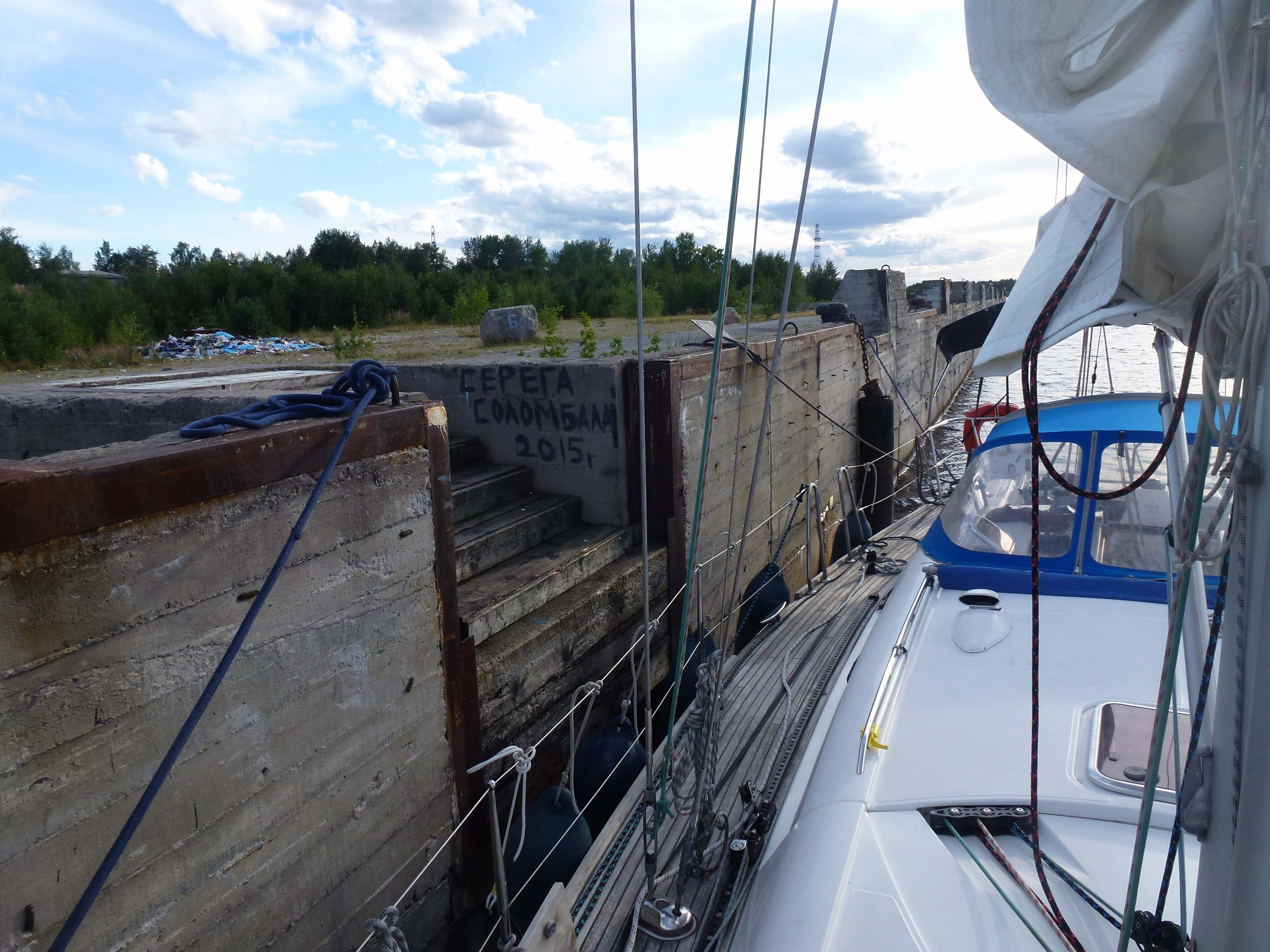
Fig. 9 The quay in Belomorsk
Back to the boat we called the phone number seen along the path and indeed got a taxi. When Masha told the driver we wanted to be driven to the town centre, the driver laughed telling us that there is no centre in Belomorsk, and that the only public place is a building serving as a hotel, where we could try to obtain a meal. Indeed the ride to the centre took us along a derelict road past some buildings in a poor state to a spot next to the river where 50 yards of dirt had been covered by tar and where two or three cars stayed or drove by. A lone young lady was pushing a stroller in which an infant was sleeping. This “square” was in front of the building serving as hotel, where indeed we did obtain a meal, which was even decent. We spent another day in Belomorsk, some of us visiting the local museum, while I prepared the navigation of the following days. Officers of the FSB came by in the morning and requested that I sign yet another form which Masha assured me read to be harmless.
The morning of August 12 we left our quay early to motor to the last lock before the White Sea in a bright sunshine with the perspective of a long, cold, but possibly pleasant sail, to the Solovki archipelago. Attempts to take a last picture of the lock were actively countered by the armed guards. Once down we left the lock to follow a long channel past derelict industrial remains and abandoned quays. Belomorsk is certainly the saddest of the small partly abandoned cities we had come to see during our navigation along the Russian inner waterways.
The level of activity in these cities has been decreasing over the last two or three decades. A consequence of this is that a significant fraction of the population had moved away. The corresponding abandoned apartments and houses had been left without any maintenance, which showed blatantly by the time of our passing by. This story is not specific to Russia in the last decades, one may read similar fates of villages in southern France in the early parts of the 20th century. Jean Gionno’s descriptions of the Provence in the 1930’s are vivid illustrations in this context. Almost abandoned villages can also be found in southern Italy in recent decades. Leftovers of heavy industry in northern England counties in the 1980s further testify of the misery that may result from societal changes. All these sights should make us reflect about the future of much of modern Europe when the population growth will come to a halt. Which is bound to happen, as we do not reproduce at a rate sufficient to keep the level of the population and as immigration, so feared now but so needed, also comes to a halt. This is to be expected as Africa develops in the next few decades, its population will then cease to grow, and the continent stop being an emigration source.
This reflection is also essential at a time when we must deal much more responsibly with the resources of the planet, and when “growth” as it is understood by most politicians and economists will no longer be a solution for the evolution our regions. It would be nice to act in a way such that we avoid the endlessly sad impression given by the cities we had come to see during the preceding weeks.

Fig. 10 With Spinnaker on the White Sea towards the Solovki archipelago
We sailed northeast from Belomorsk to the Solovki archipelago, some 50 nautical miles away under spinnaker, alone on the White Sea; a glorious day at sea under the sun with a cool and fresh breeze. The Solovki archipelago is the ensemble of islands called the Goulag archipelago by Soljenitsyn when he described the life and death of thousands within its walls during the 1930s.
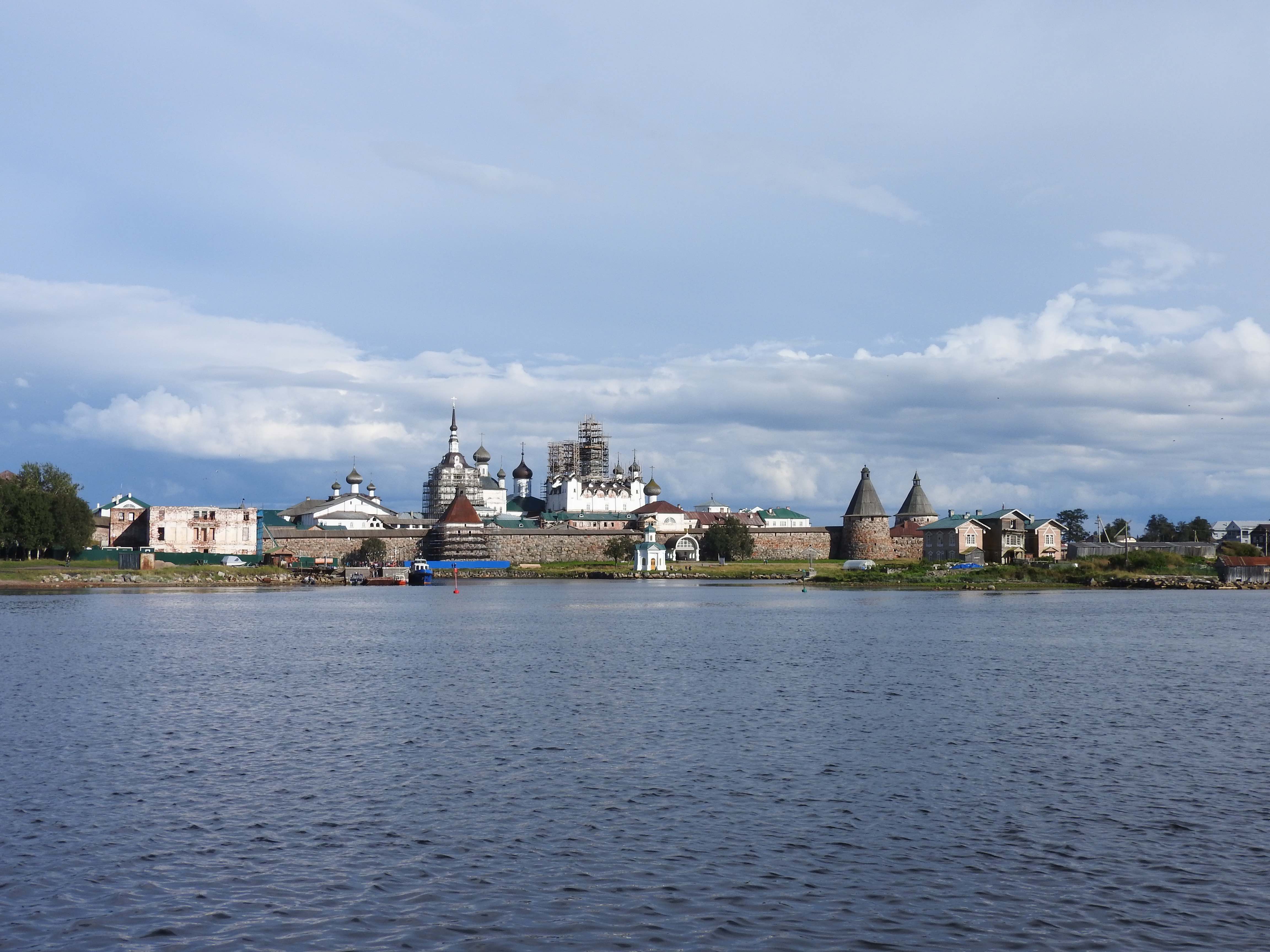
Fig. 11 Approaching the Solovki archipelago, also known as the Goulag archipelago.
The approach to the Solovki archipelago requires some care as the main island is surrounded by a maze of islets and stones. The monastery that emerges from the landscape within its walled kremlin would probably look impressive, were it not shrouded in scaffolding. Works in progress is indeed a leitmotiv on the island.
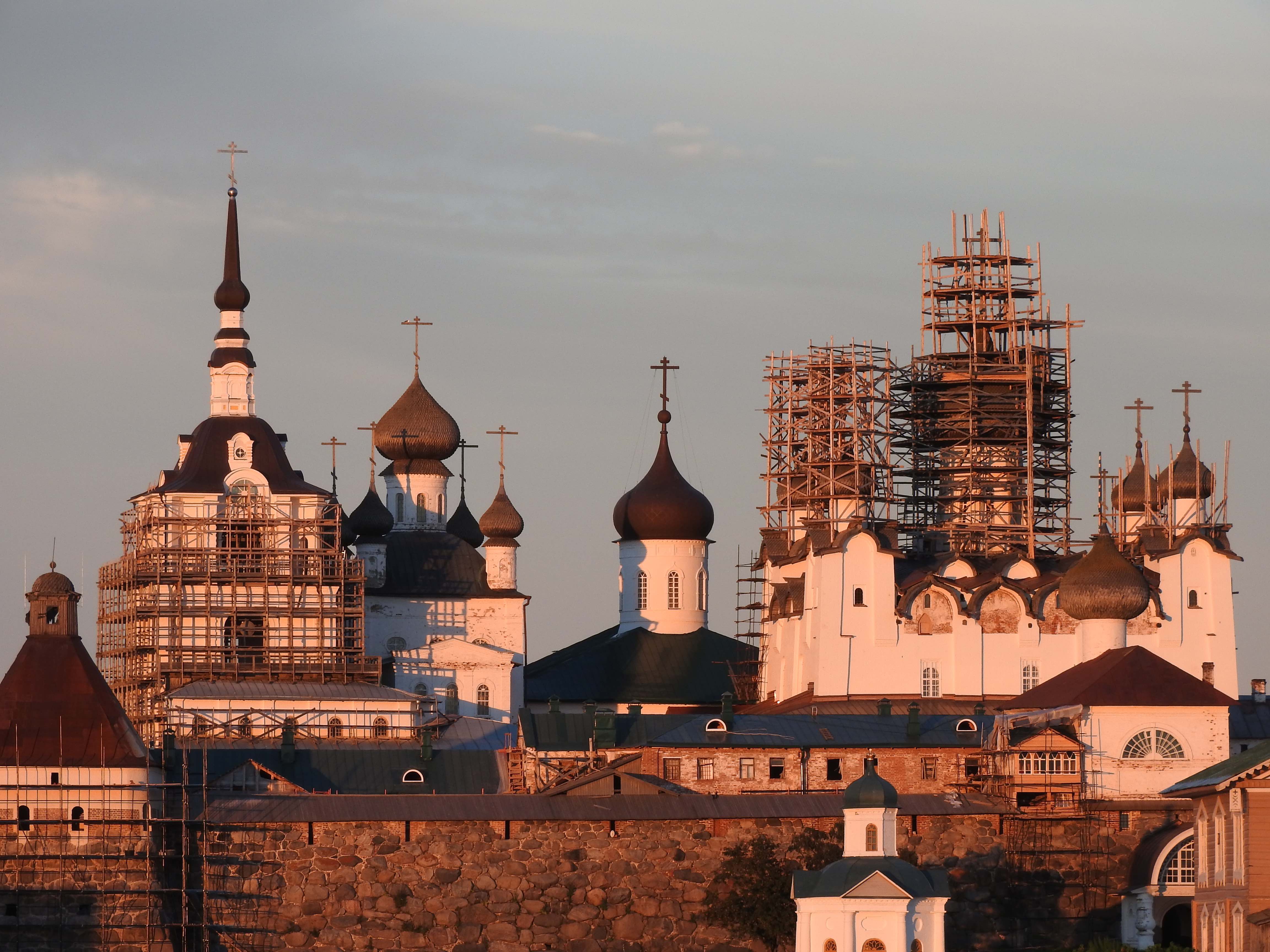
Fig. 12 The Solovki monastery
At the origin of the monastery, there is, like for other monasteries in northeast Russia, a lone hermit followed by an important development in the19th century which transformed the original very simple quarters into rich and complex buildings attesting the glory of the orthodox church. The history of the Solovki monastery is, like that of the Oreshk fortress on lake Ladoga, “enriched” by a dark episode of Soviet repression. The archipelago served as detention centre and administrative authority for a number of camps in the area during the late time of Lenine and the Stalin era. It became known as the Goulag archipelago through Soljenitsyn’s celebrated saga. The works in progress aim at removing all traces of that time and at restoring the monastery to its most glorious appearance.
There is no proper harbour in the surroundings of the monastery, but a derelict quay on which a sturdy looking Russian sailboat had tied. We went alongside for a while before anchoring in the bay. The Russian crew came from a forbidden city, host of the Russian nuclear submarine construction, next to Arkhangelsk.
A first tour of the place in the late afternoon allowed us to find out that without a guide it would be hopeless for a foreign visitor to find its way in the maze of buildings within the kremlin or on the island. Walking freely also allowed us to scout the surroundings of the monastery looking for some shoes for Masha. Thus strolling around far from the pilgrim or tourist crowds gave us the opportunity to get some idea of the life on the island. Everyone here lives one way or another from the monastery, be it directly from its operation, either as monks or in some other religious function, or from the building work, or to serve the pilgrims, or as support for the other communities as school teachers, traders etc.. Our wandering shattered my naive expectation that we would be able to get in touch with some of these people, were we to stay for some days. Mariusz Wilk, a polish journalist, spent several months in this community and describes vividly a number of characters, entangled in complex personal lives, lost expectations and large quantities of alcohol (The Journals of a White Sea Wolf, M. Wilk ). A world I had naively imagined being able to approach having come all the way on a sailing boat. But here, as elsewhere, people were careful not to notice us. Obviously it takes much more than a few days, and probably a good command of the Russian language, to approach this community.
The guide we hired for the following day was highly competent, but remained distant avoiding any conversation that did not centre on the monastery or the Kremlin and its dependencies, where almost no traces of the Soviet detention facilities are still visible. However, the unrestored buildings and facilities give an idea of the conditions that were prevailing in the middle of the 20th century. Soljenitsyn’s descriptions, a number of pages from “ The Meteorologist” by Olivier Rolin , some pictures on display and some stories of our guide did give us an idea of the conditions on the detention camp. Interestingly our guide refuted energetically some of the stories of Soljenitsyn. He describes, for example, how unruly prisoners were sometimes precipitated down a long and steep staircase with their hands tied in order to die from broken backs and heads. Our guide objected that this had certainly not taken place, as the guards would not have been stupid enough to throw down prisoners several hundred steps, whose bodies would then have to be hived up again. In absence of further research on these sordid stories, we’ll leave the doubt as to the veracity of Soljenitsyn’s descriptions open.
While the Bolsheviks destroyed almost all art on the archipelago, as it belonged to the church they despised, some works were salvaged under the pretext of keeping few items to show posterity the decadence of the pre revolution epoch. These items are on show in a small, but beautiful museum within the monastery.
The weather forecast was grim for the period coming up with force 7 easterly winds due some days hence. Since the route from the Solovki archipelago to Arkhangelsk is ENE and then SE, we decided to leave a day earlier than planned. The 14th of August thus saw us lift anchor to sail some 30 hours hoping to get to Arkhangelsk before the weather turned nasty. Barbara thus spent her birthday at sea on the White Sea, rather than in the Goulag. The trip was excellent with the visit of a Beluga in the afternoon, and fair and cool winds on a manageable sea. On the morning of the second day a military ship kept appearing above the horizon, approaching us to some nautical miles, to disappear again before reappearing. This game ceased as we approached the channel leading into the city. This channel is some 25 nautical miles long starting while no shore is visible. It is well marked with massive buoys and is equipped, unusually, with lights on the channel side at each bend, green or red depending on whether the channel bends to starboard or to port.
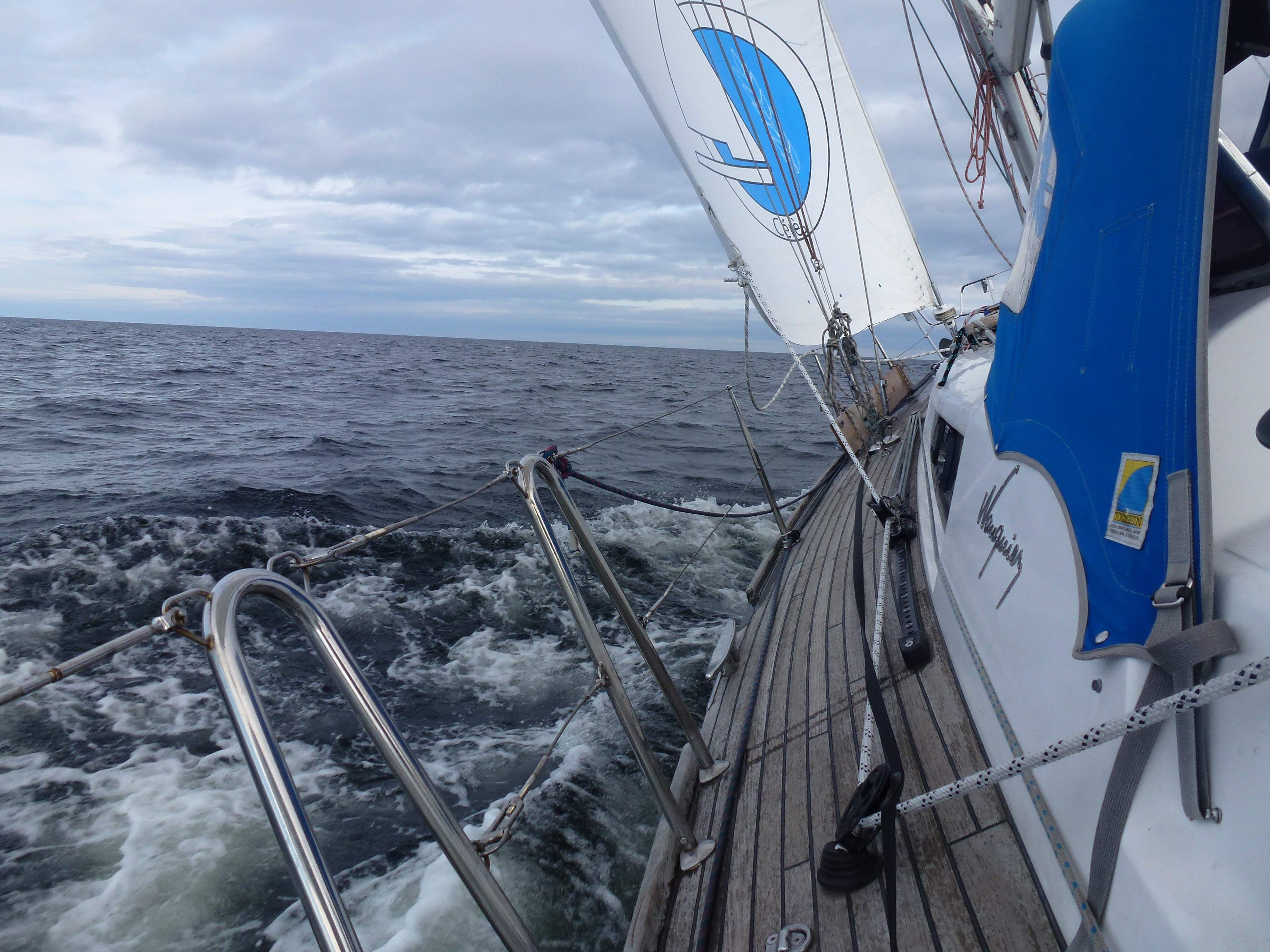
Fig. 13 Cérès on the White Sea towards Arkhangelsk
Radio and telephone became most active as we motored up the channel. All sorts of authorities wanted to know where we were. Vladimir, the OCC port officer who had helped us plan and execute our trip, had to report on our position and so were we to several authorities; a rather unusual administrative level of activity that kept Masha busy speaking on the VHF and telephone.
Approaching the city, one sees large quantities of floating wood brought down from the forests upstream, and many wood industries in more or less good shape, except for one large plant, bright blue, which led us to think that a famous Swedish furniture company gets at least part of the wood it uses from this region.
We had been instructed to moor at the local yacht club and to be careful to arrive when the tide was high enough for us to navigate safely to the quay following a large curve at the bend of the river. While there was indeed barely enough water for our draught, the expected quay was nowhere to be seen. The barge that had served as mooring place had been moved and instead a large motor ship, a converted military ship, was moored along a stone quay. Alongside was the only possibility for us to tie anywhere. Not only was the shape of the ship, broader at its deck than at the waterline, anything but adapted to moor a sailing yacht, but we were told that they would leave an hour later to come back after having fuelled somewhere. The strong easterly winds had arrived with pouring cold rain putting the last touch to a grim arrival. We had no choice, but manoeuvre when required trying to stay in waters deep enough for us in the decreasing light of a late summer arctic stormy day. Eventually manoeuvring came to en end, we were reasonably safely tied, warm and dry inside Cérès, Masha had found her boyfriend and was to see her mother, and we could relax with a solid glass of wine, when the phone rang one last time. It was Vladimir telling us that the Russian northern fleet had just closed the White Sea and the Russian part of the Barents Sea to all civilian navigation for an unspecified duration.



